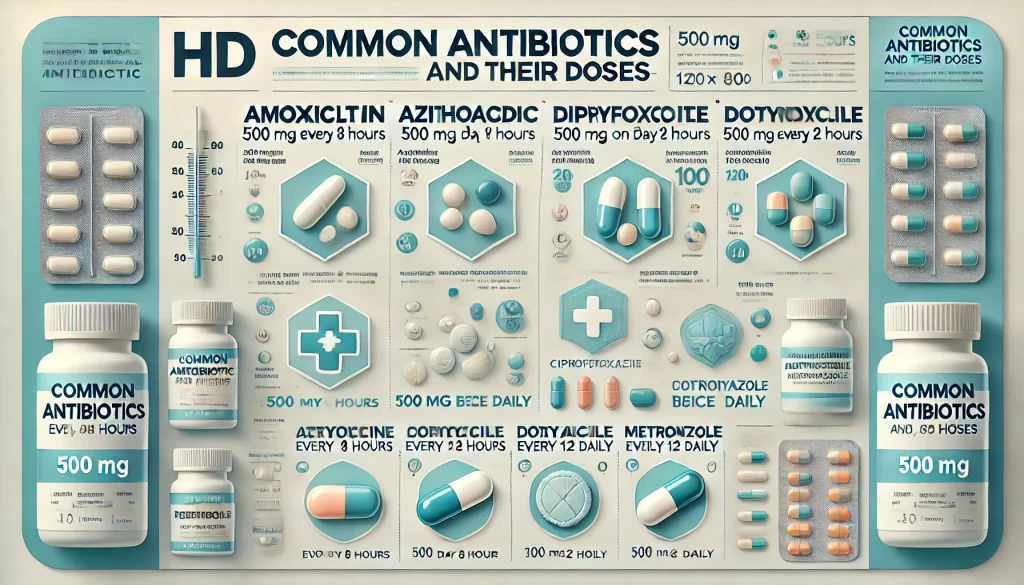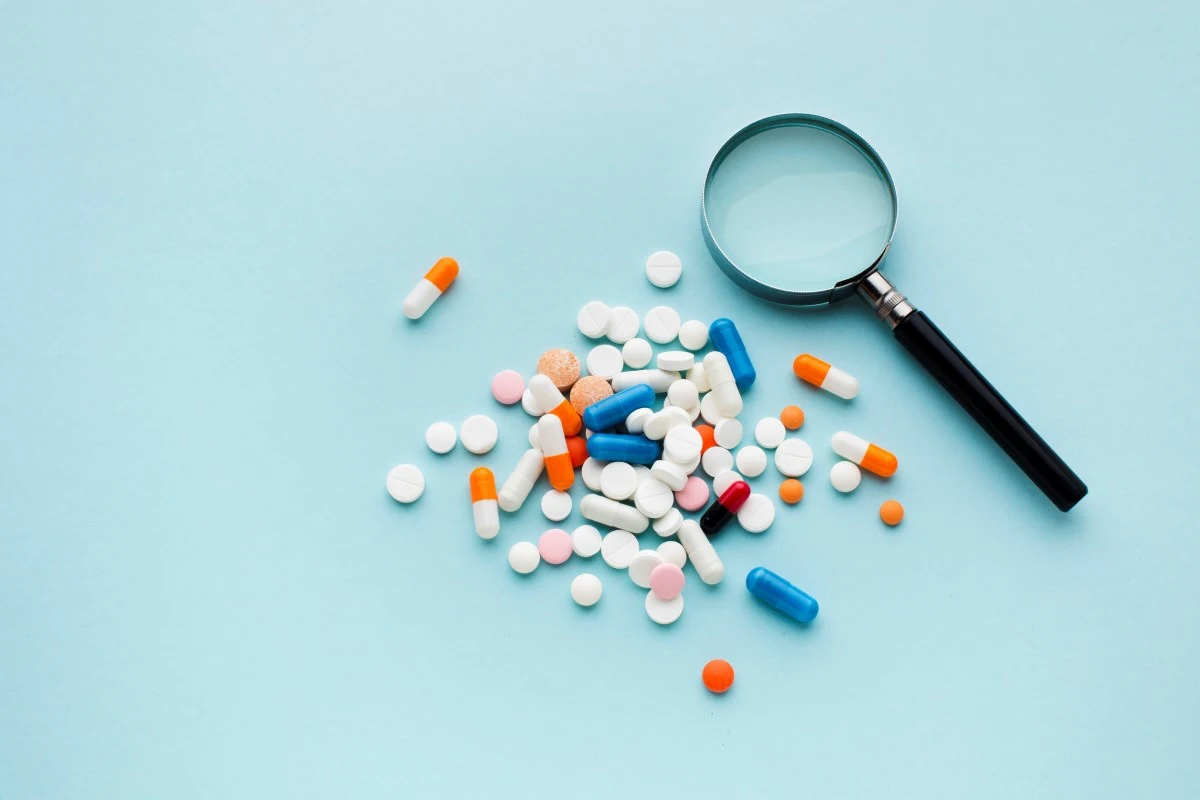Antibiotics are perhaps the most important medicines in contemporary medicine. Antibiotics are applied to cure bacterial infections that are harmful and have saved millions of lives across the globe. So, what exactly are antibiotics? These potent medications act by either killing bacteria or inhibiting bacteria from growing and multiplying in the body. Antibiotics do not work against viruses, like the flu or the common cold. There are various classes of antibiotics, each intended to attack specific bacteria. Learning about how antibiotics work and when to take them is necessary in order to make them effective and prevent antibiotic resistance.
What Are Antibiotics?
Antibiotics are medicines used to treat infections caused by bacteria. They do not work against viruses such as the flu, cold, or COVID-19. These medicines either kill the bacteria directly or stop them from growing and multiplying. Once the bacteria are under control, your body can heal itself.
Why Are Antibiotics Important?
Before antibiotics were discovered, even small infections like a cut or a sore throat could become life-threatening. Thanks to antibiotics, we can now treat bacterial infections safely and quickly.
What Was the First Antibiotic?
The first antibiotic was penicillin. It was discovered in 1928 by Alexander Fleming, a scientist from Scotland. He found that a type of mold could kill bacteria. This mold led to the creation of penicillin, which became the first widely used antibiotic medicine.
Penicillin changed the way doctors treated infections and started a new era in medical science.
How Do Antibiotics Work?
Antibiotics work in two main ways:
- Bactericidal antibiotics: These kill bacteria directly.
- Bacteriostatic antibiotics: These stop bacteria from growing and spreading.
Some antibiotics target the bacteria’s cell wall, while others affect how they make proteins or copy their DNA. Each type of antibiotic works in a different way, depending on the kind of bacteria causing the infection.
Classes of Antibiotics
There are many types or “classes” of antibiotics. Each class works in a different way and is used to treat different infections. Here’s a simple antibiotics chart showing some of the major classes:
| Class Name | Common Example | How It Works | Common Uses |
| Penicillins | Penicillin, Amoxicillin | Stops bacteria from building cell walls | Sore throat, ear infections |
| Cephalosporin | Cephalexin, Ceftriaxone | Breaks down bacterial cell walls | Pneumonia, skin infections |
| Macrolides | Azithromycin, Erythromycin | Stops bacteria from making proteins | Respiratory infections, STIs |
| Fluoroquinolones | Ciprofloxacin, Levofloxacin | Affects bacterial DNA | UTIs, gastrointestinal infections |
| Tetracyclines | Doxycycline, Tetracycline | Blocks protein production in bacteria | Acne, Lyme disease |
| Aminoglycosides | Gentamicin, Amikacin | Damages bacteria’s ability to make proteins | Serious infections in hospitals |
| Sulfonamides | Sulfamethoxazole | Stops bacteria from making folic acid | UTIs, bronchitis |
| Carbapenems | Meropenem, Imipenem | Strongly kills bacteria by cell wall disruption | Severe hospital infections |
Each class of antibiotics is used based on the type of infection and how serious it is. Doctors choose the right class after checking the patient’s symptoms and test results.
Common Antibiotic Medicines
Some antibiotics are more commonly used than others. These are prescribed for everyday infections and are usually safe when taken correctly.
Here are some commonly used antibiotics medicines:
- Amoxicillin: A penicillin-type antibiotic for ear, nose, and throat infections.
- Azithromycin: Used for lung infections like bronchitis and pneumonia.
- Ciprofloxacin: Often given for urinary tract infections (UTIs).
- Doxycycline: Used to treat acne, malaria, and some respiratory infections.
- Metronidazole: Used for dental infections and stomach issues caused by bacteria.
It’s important to always follow your doctor’s instructions when taking antibiotics. Misuse can lead to problems like resistance.
What Is Antibiotic Resistance?
Antibiotic resistance happens when bacteria stop responding to the antibiotics meant to kill them. This means the medicine becomes useless, and the infection stays or gets worse.
What Causes Resistance?
- Taking antibiotics when not needed
- Not finishing the full course of medicine
- Using leftover antibiotics from someone else
- Overuse of antibiotics in farming and animals
Why It’s a Big Problem
When bacteria become resistant, doctors may have fewer treatment options. This can make simple infections dangerous again. That’s why we must use antibiotics wisely.
When Should You Take Antibiotics?
Antibiotics should only be taken when prescribed by a doctor. They are not helpful for viral infections like:
- Common cold
- Flu
- Sore throat (unless caused by strep bacteria)
- COVID-19
Taking antibiotics for viral infections won’t help and may increase your risk of resistance.
Side Effects of Antibiotics
Like all medicines, antibiotics can have side effects. Most are mild, but some may be serious. Common side effects include:
- Stomach upset
- Diarrhea
- Skin rash
- Yeast infections
In rare cases, allergic reactions can happen. If you experience breathing problems, swelling, or severe rash after taking antibiotics, seek medical help immediately.
Tips to Use Antibiotics Safely
To stay safe and protect the power of antibiotics:
✅ Always take antibiotics exactly as your doctor says
✅ Do not skip doses or stop early
✅ Do not share antibiotics with others
✅ Do not use leftover antibiotics
✅ Finish the full course even if you feel better
Using antibiotics responsibly helps protect your health and the health of others.
Antibiotics Chart for Quick Understanding

Here’s a quick reference antibiotics chart for better clarity:
| Condition | Likely Antibiotic Class | Notes |
| Sore throat (strep) | Penicillin or Macrolide | Only for bacterial throat infections |
| Ear infections | Penicillin (Amoxicillin) | Common in children |
| Urinary Tract Infections | Sulfonamides or Fluoroquinolones | Drink plenty of water |
| Acne | Tetracyclines (Doxycycline) | Long-term use under medical care |
| Pneumonia | Macrolides or Cephalosporins | Often needs quick treatment |
| Skin infections | Cephalosporins or Penicillins | Depends on the type of bacteria |
Fun Fact: Natural Sources of Antibiotics
Did you know some antibiotics come from natural sources like fungi and bacteria? For example:
- Penicillin comes from a mold called Penicillium.
- Streptomycin, another early antibiotic, comes from Streptomyces bacteria found in soil.
These natural microbes help us fight harmful bacteria—nature helping nature!
Use Antibiotics the Right Way
Now that you understand what are antibiotics, you can see how important they are in treating bacterial infections. With the right use, they can protect lives and prevent serious illnesses.
But with careless use, we risk losing their power due to antibiotic resistance.
To sum up:
- Antibiotics fight bacterial infections, not viruses.
- There are many classes of antibiotics, each working in a different way.
- Always follow your doctor’s advice and never self-medicate.
- Be aware of the risks, including side effects and resistance.
Let’s all do our part in using antibiotics wisely—for our own health and for the future.





